Megalithic and Historic Ireland, and the Bog Man
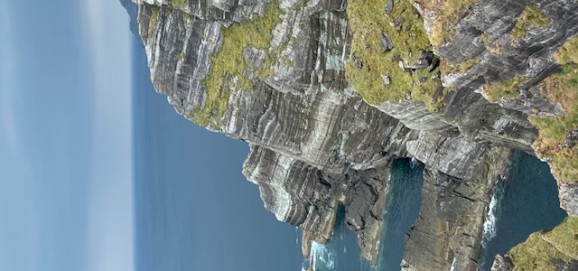
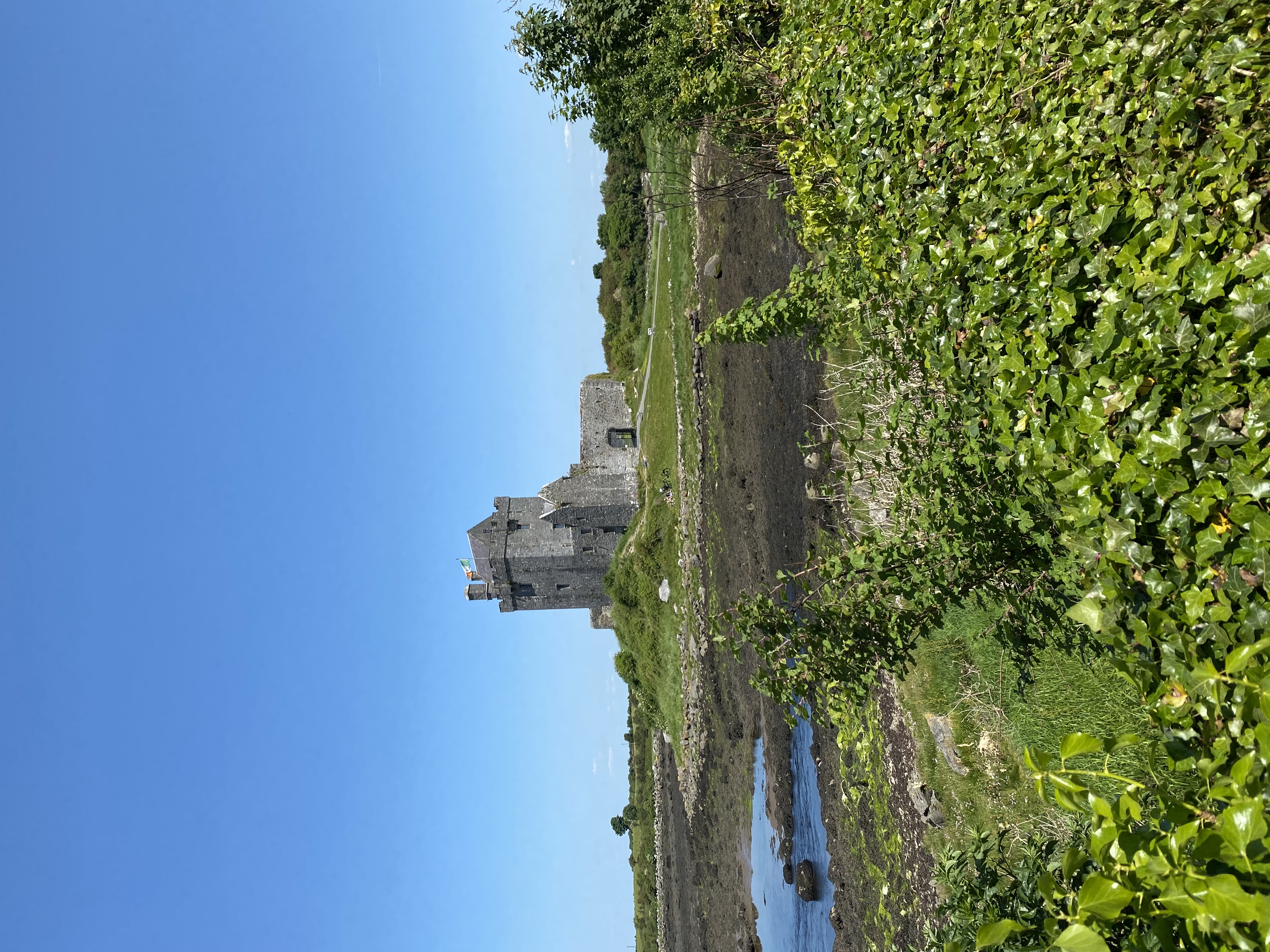 Megalithic and Historic Ireland, and the Bog Man
Megalithic and Historic Ireland, and the Bog Man
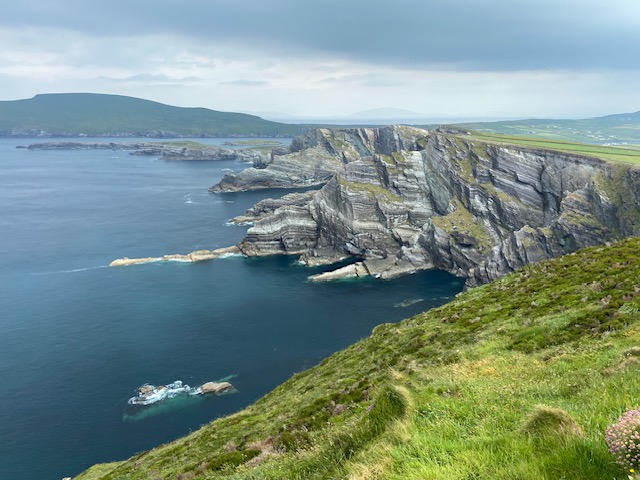

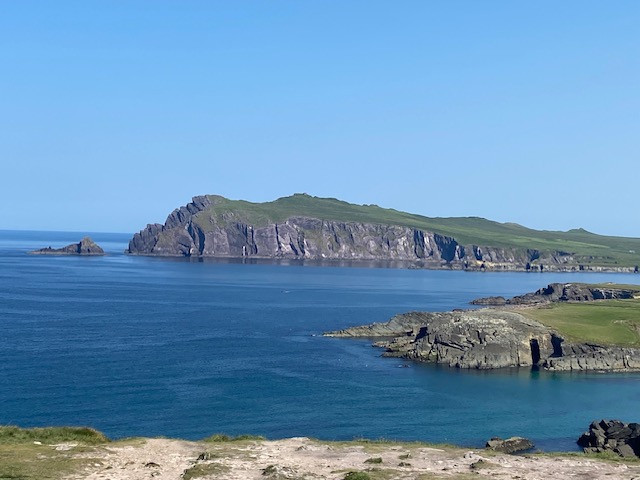
Above pictures: seascapes in Western Ireland
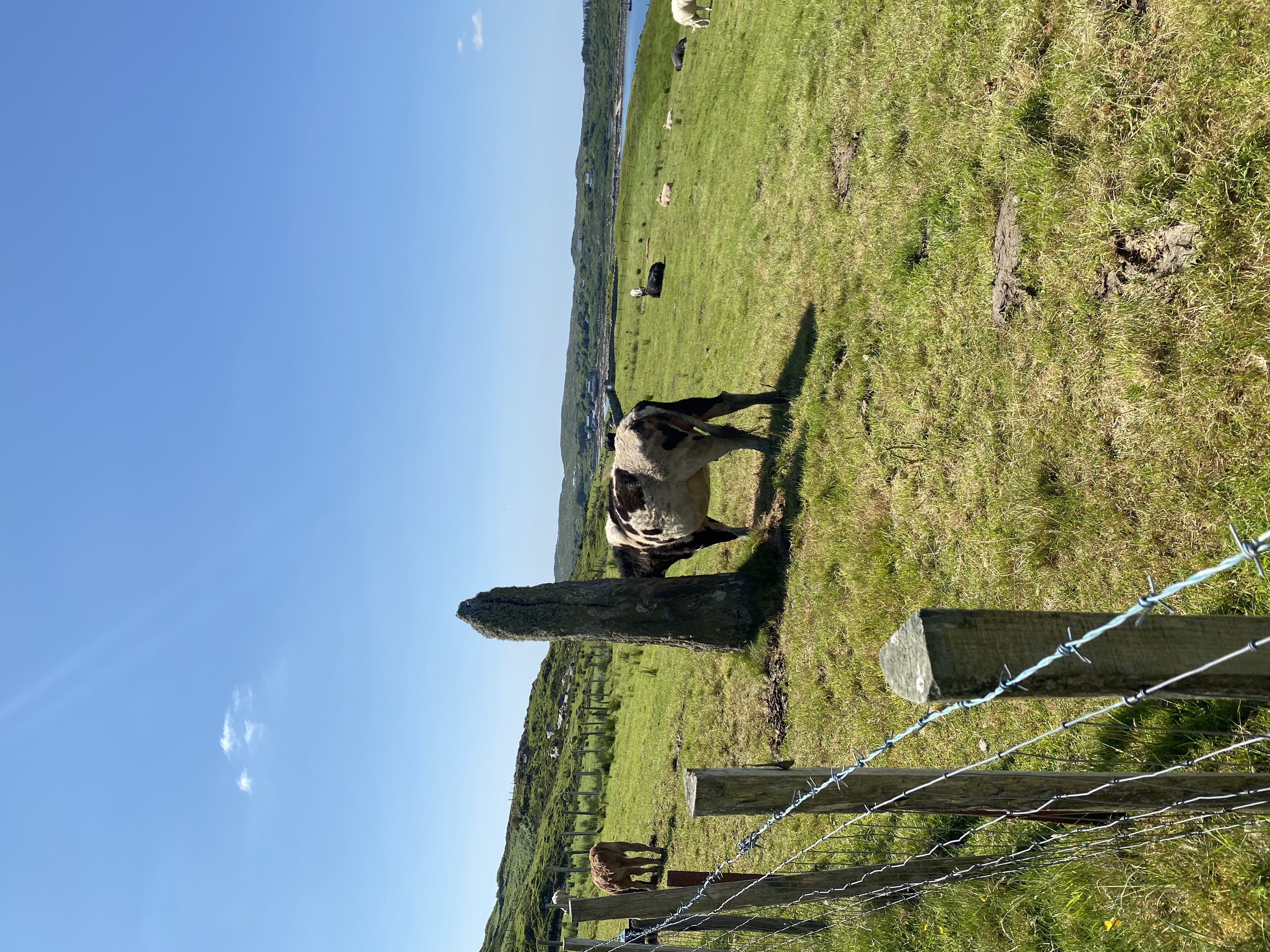
Standing stone with standing cow
In early June, 2023, my wife and I flew to Dublin, Ireland and met her parents, who had brought their car on the ferry from the U.K. We spent almost two weeks on a self-driving car tour of the west coast of Ireland, staying in eight different hotels during the trip. The rolling green hills, seascapes and cliffs along the way were spectacular. We were able to go on a boat trip where we saw both common and bottlenose dolphins, and two Minke whales. We were also able to see castles and many megalithic structures. Standing stones, stone circles and burial “fairy mounds” seemed to be everywhere. In a program about Ireland on the History Channel’s “Ancient Aliens” series, commentators noted that many Irish people today believe deeply in the presence of faries and the “little people,” who are associated with the fairy mounds and the “fairy trees” growing on them. Apparently, when modern developers have bulldozed or tried to relocate the mounds, or disturbed the fairy trees, misfortune has befallen the companies or their owners.
The pictures below, show me within a stone circle built on a fairy mound with fairy trees in Kenmore, County Kerry. Tourists write a wish on a piece of paper, hang it on a designated fairy tree and the wish is hopefully granted. When I first put my hands on the center stone in the circle, I felt a mild tingling in both hands. I seemed to flash on a historical event with torches around a nighttime ceremony. A few moments later I experienced a huge and powerful entity or energy hovering over the stone. I did not feel threatened, but the energy/entity seemed somewhat dark. A few moments later I overheard a tour guide relate that a few years earlier, for some reason, a workman tried to drill into the center of the stone. (Why would he do that?) As the account goes, when the drill bit was only about ½ inch deep into the stone, stone shards from the hole exploded into the workman’s face, rendering him permanently blind. The tour guide said this was a true story, and showed us the small drill hole still visible on the center stone. (Note to self: Don’t mess with the stones.)

Fairy Tree with written wishes
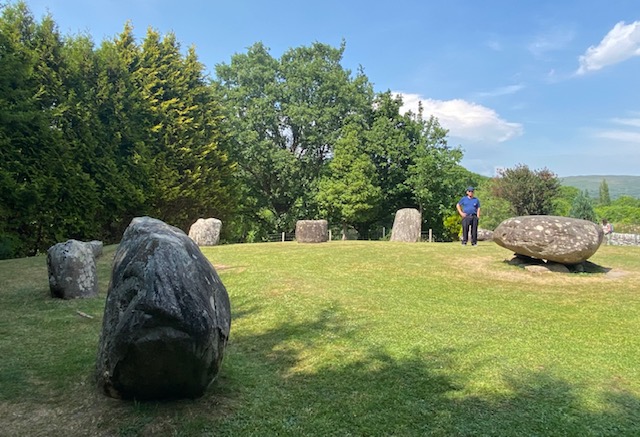
Stone circle

Center stone (with drill hole)
In County Clare, we visited a 5,000-year-old megalithic stone tomb. The scientifically determined origin of 3,000 B.C. takes the tomb back roughly to the time of the building of Stonehenge in the U. K. The construction of the tomb was simple but impressive, and it has lasted thousands of years. The tomb was roped off and you could only get about 20 feet from it. However, when I faced my palms toward the structure, I felt strong pin pricks all over both hands, as when you sleep on your hands and then wake up. This was true on all sides of the tomb, but the feeling subsided each time I backed away. I was amazed that the charge was still that strong, even after millennia.
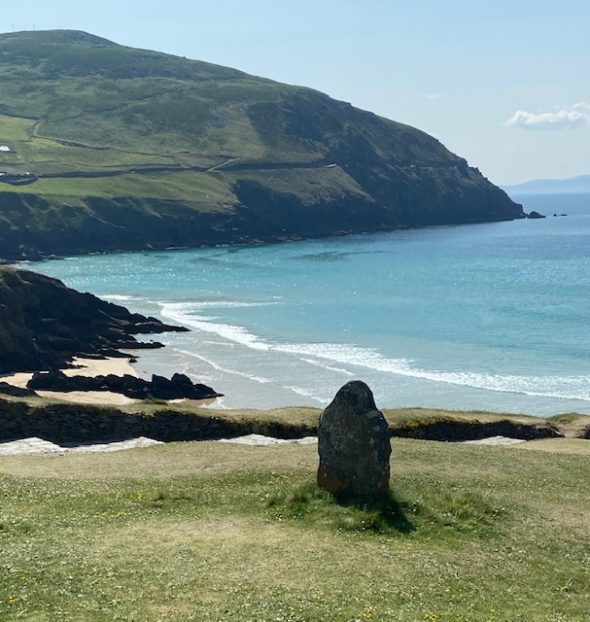
Standing stone on Irish coast
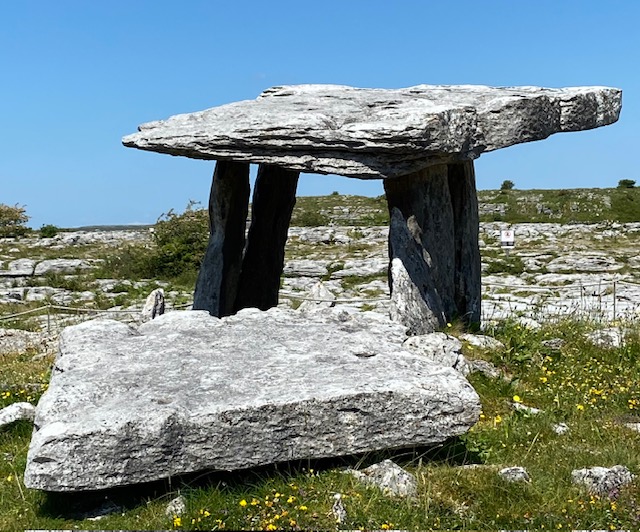

We also passed or visited a number of castles or stone forts during our travel, some still intact, but most derelict or falling down. One structure that was amazingly unscathed was a circular stone fort in County Kerry dated to approximately 500 B.C. It was about 40 yards in diameter with thick 30-foot high walls, and a smaller stone structure in the interior of the fort. The walls were comprised of stacked slabs of slate without mortar, and had slate stairs leading up to ramparts all around the fort. The proof seems to be in the pudding with regard to the resiliency of this structure after 2,500 years.
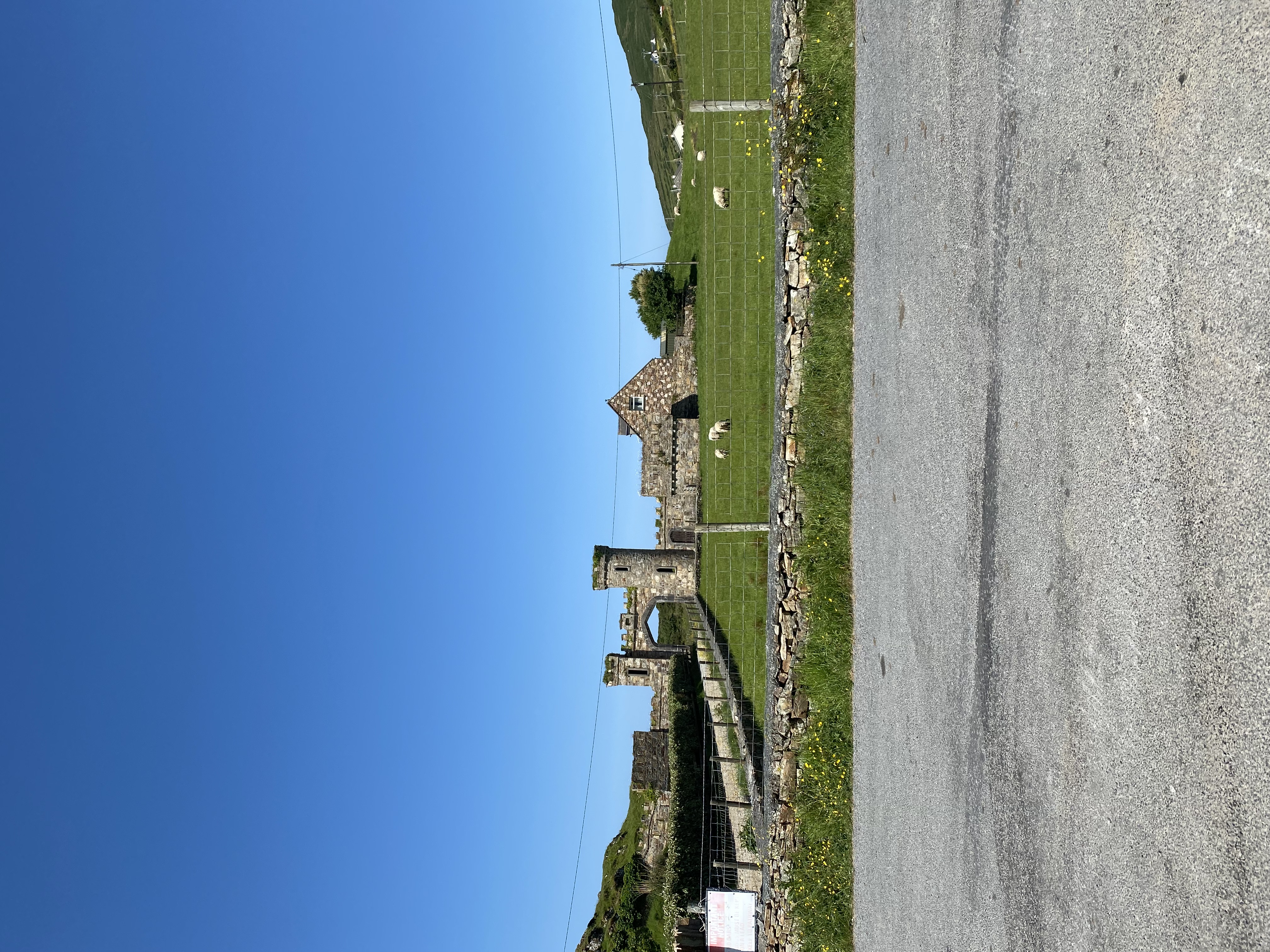
Castle and wall
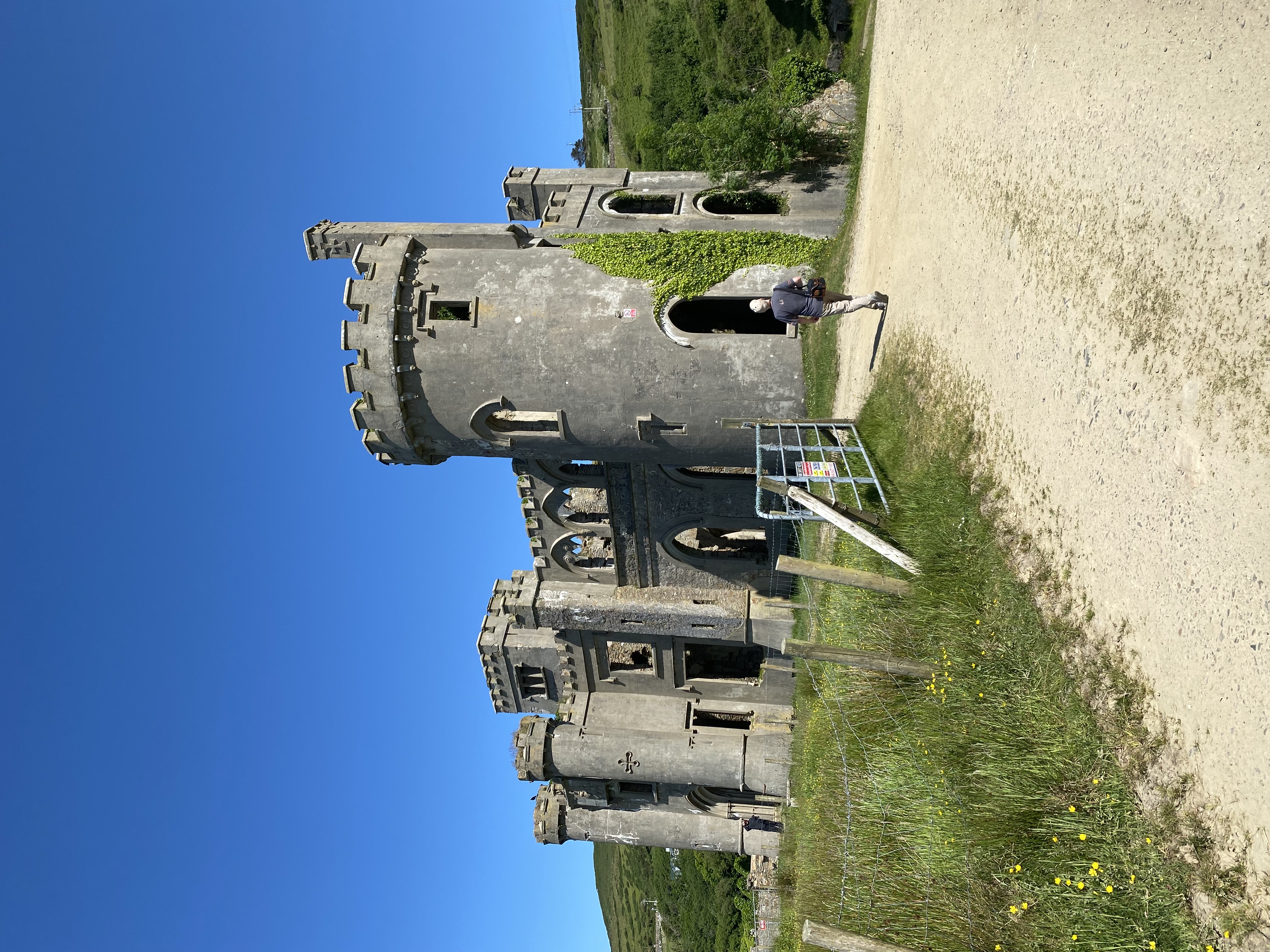
Castle
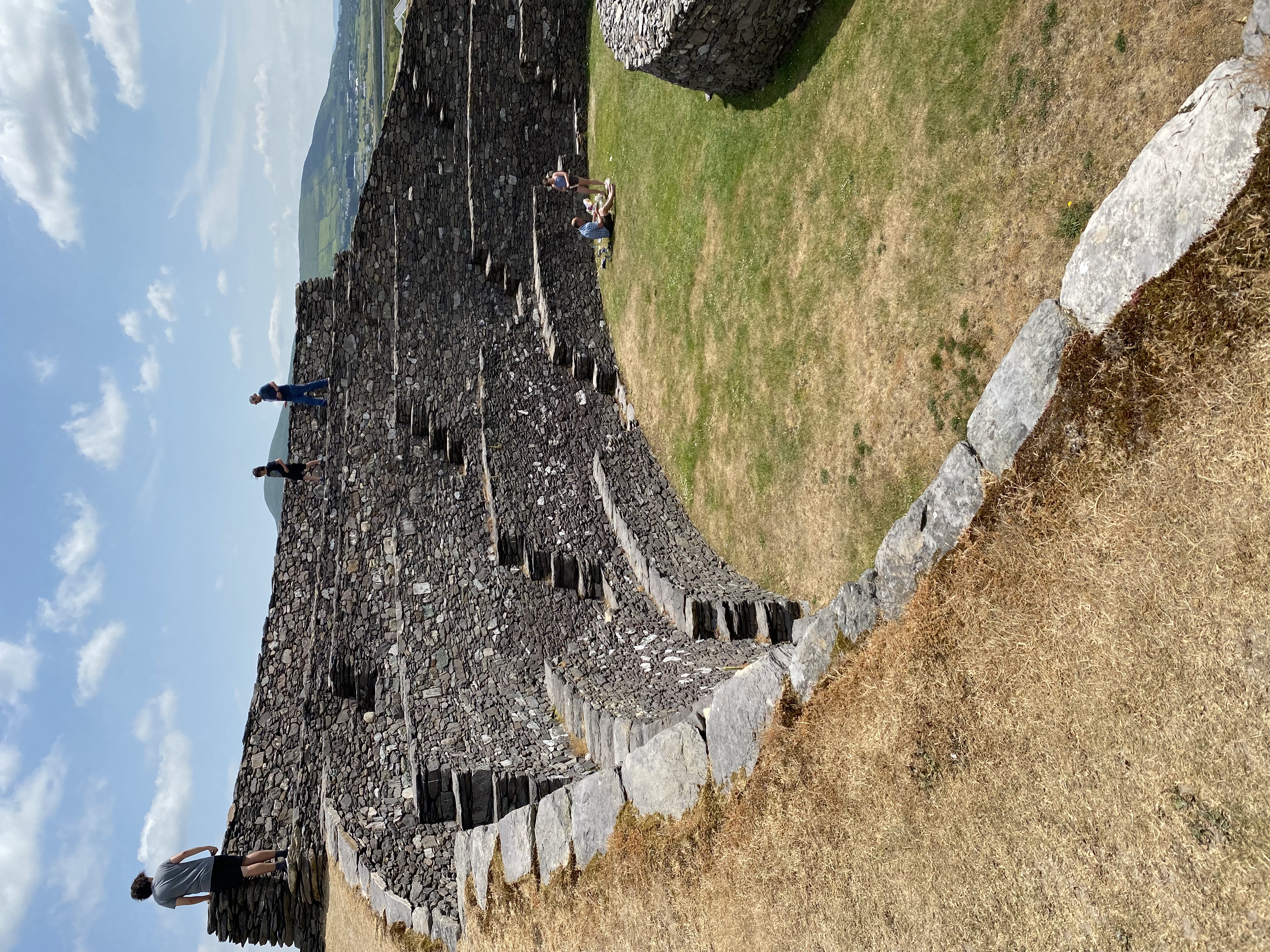
Stone Fort
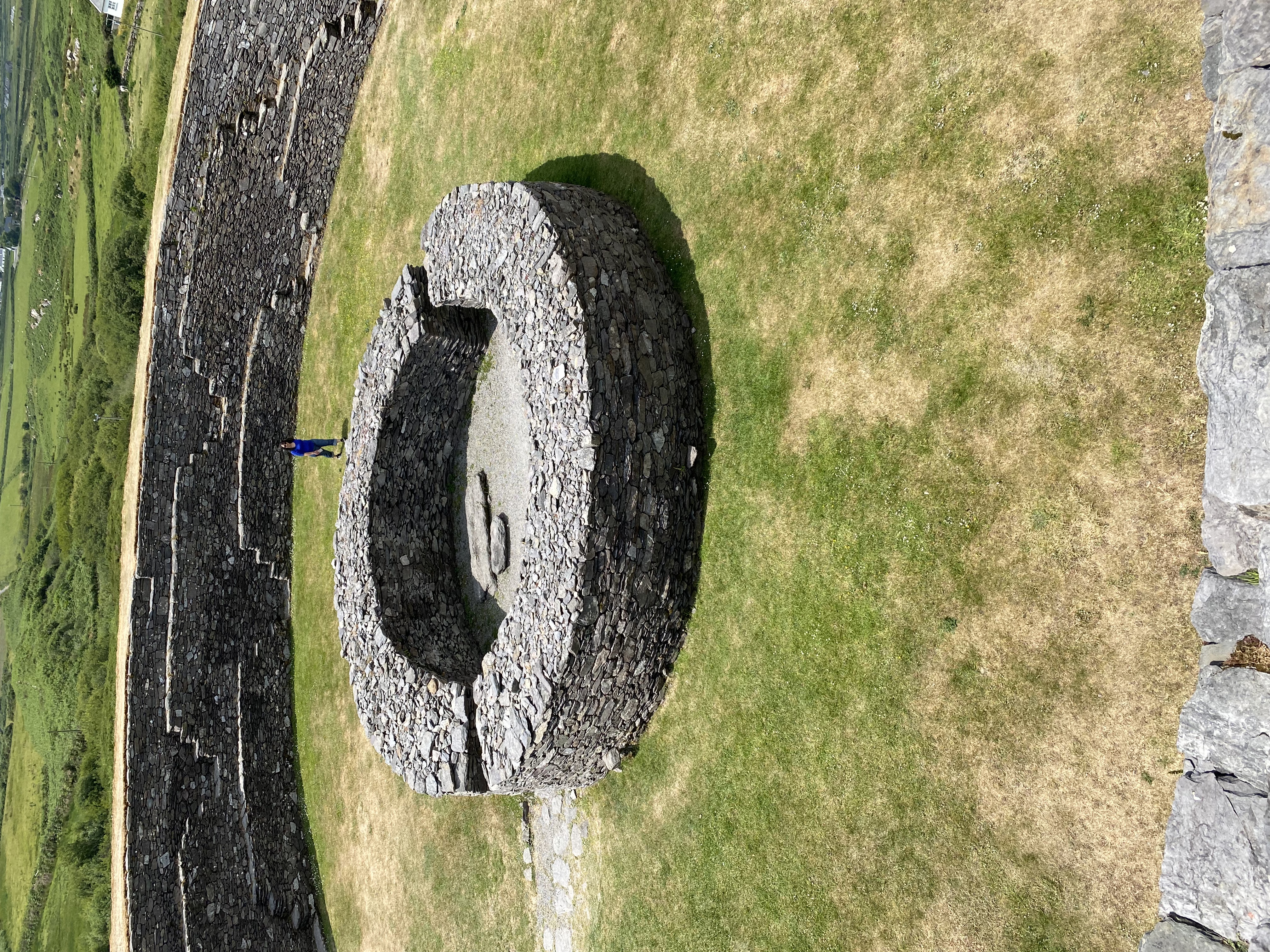
Stone fort: walls of center dwelling
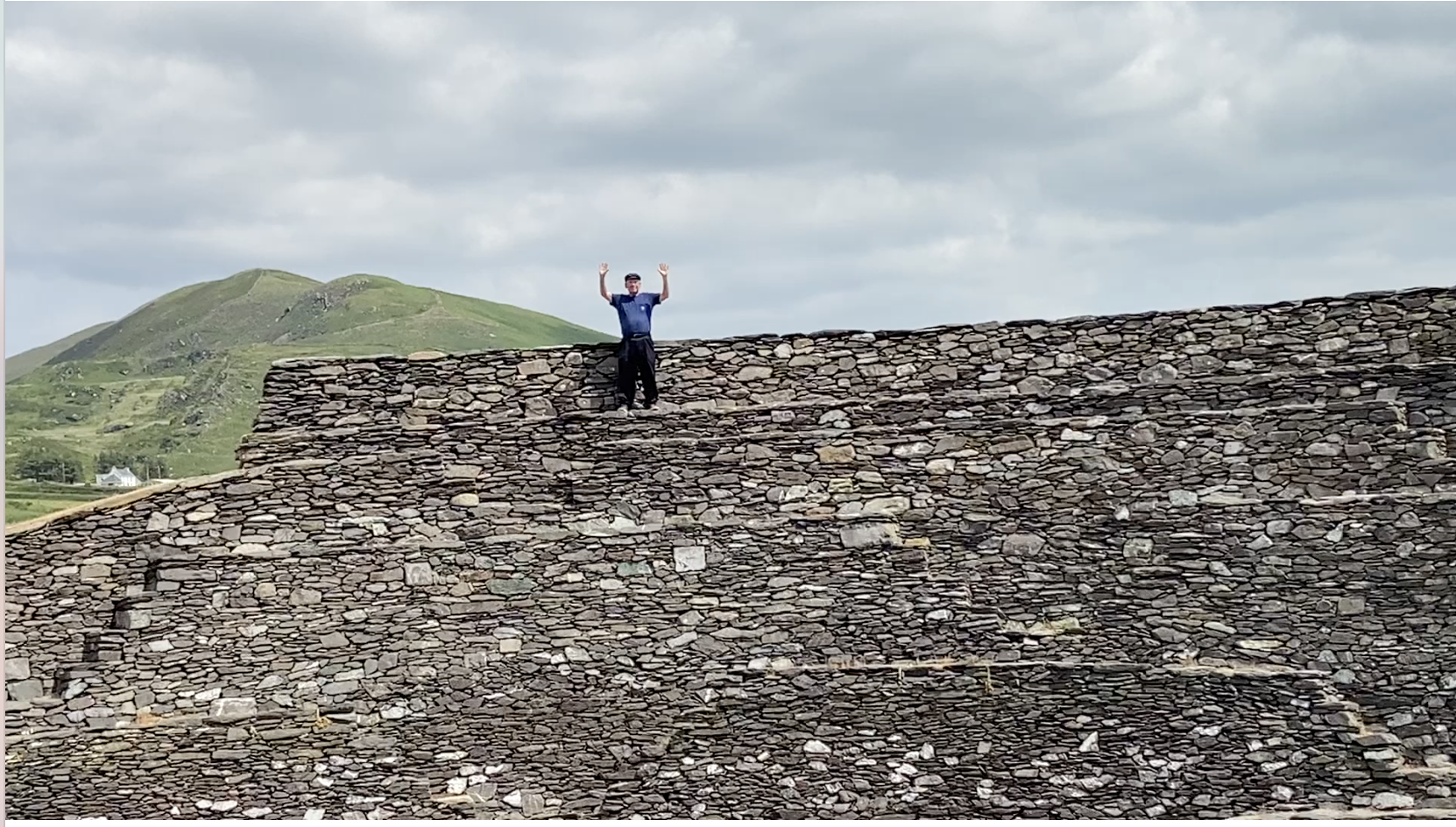
Massive slate walls without mortar
In that same area we found modern reconstructions of “bee hive huts,” which were smaller stacked slate dwellings where the megalithic local residents reportedly lived. The huts were built with the slates angled downwardly for water run-off, so they were pretty rainproof and windproof for that damp climate. There seemed to be no holes or chimneys, so I don’t know where the smoke went if they had fires in the hut.
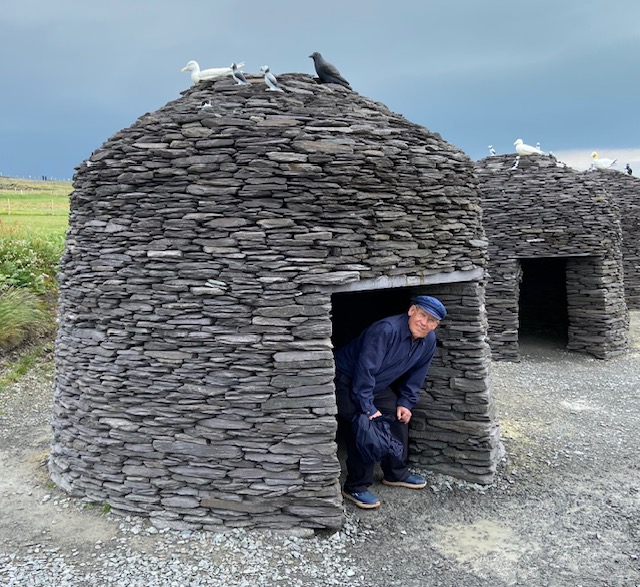
Bee hive huts
On our very first day in Dublin, we visited the “National Museum of Ireland: Archeology,” where we saw exhibits depicting Ireland’s past. My whole life I have heard of the “bog people.” In the Celtic British Isles and Northern Europe, human sacrifices were made and the bodies were deposited in peat bogs, where the chemistry of the bogs effectively mummified them. In recent times, bodies have been discovered which retained their facial features, including pores and whiskers, hands and feet, clothing and even some items used to cause the deaths of the individuals. I was always fascinated by this practice, but never did any research on it. What I had heard anecdotally was that bog people were probably high born or special people in the community, selected for sacrifice to somehow appease the gods due to their elevated status. Research suggests that the Celts revered and sometimes feared the bogs, as seen in the movie series, “Lord of the Rings.” In the museum, in addition to displays of hoards of golden jewelry and other objects from burials, there was a section devoted to bog sacrifices. In that display were lists of the detailed analyses done on a specific body found in County Meath. They labeled the body Clonycavan Man, but I will call him Mr. Meath. His death was dated to approximately 200-400 B.C.
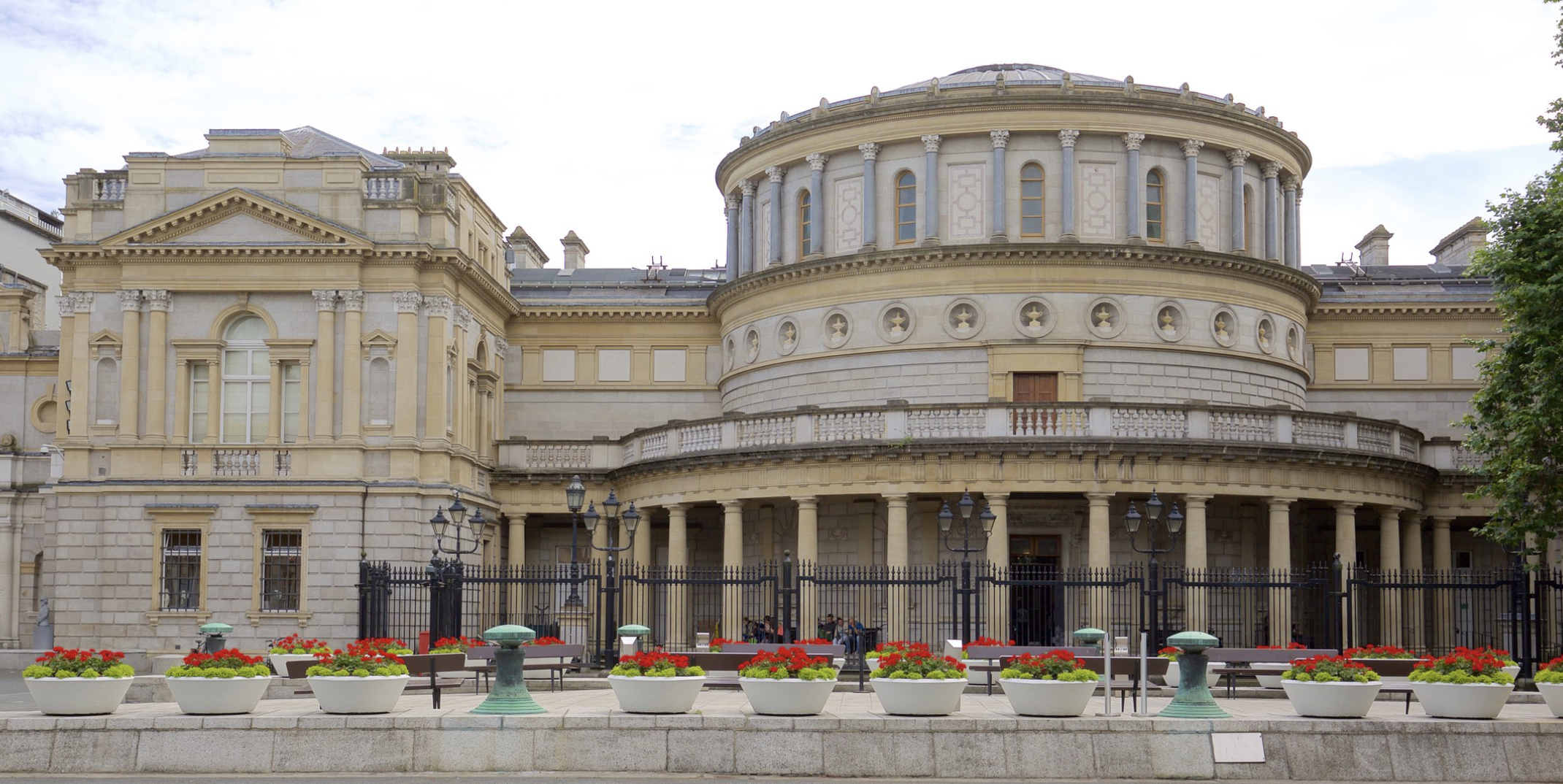
The Museum of Archeology
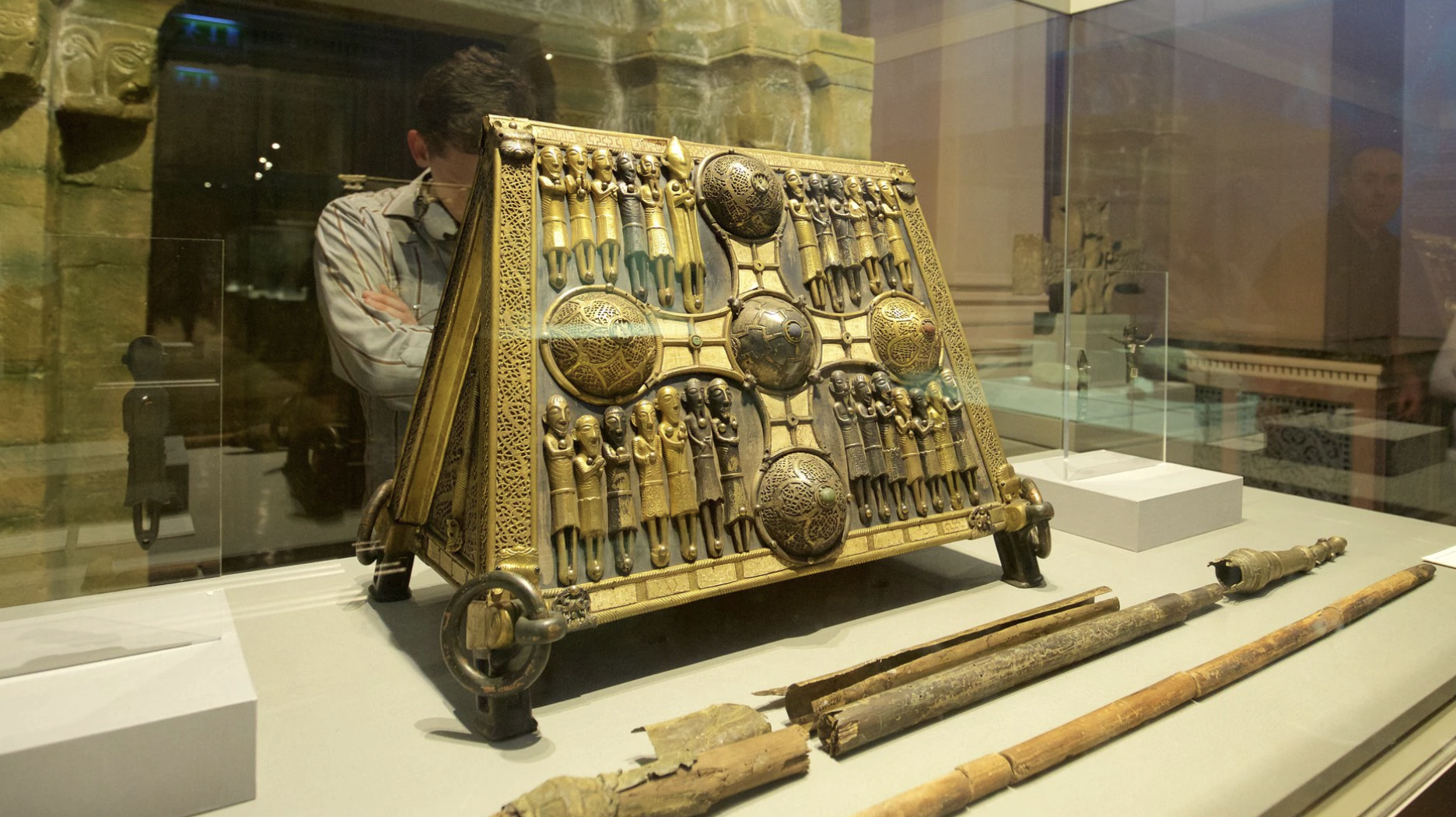
Golden burial hoard
From the close-up pictures of Mr. Meath’s body I realized that while his right hand was clenched, the fingernails and lower part of his left hand and wrist were visible in detail, including fingerprints under his left thumb. To my amazement, having been a palm reader for 55 years, I realized I could see just enough to get a general sketch of Mr. Meath’s life, even after these 2,400 years. Meath’s fingernails were deeply vertically ridged, meaning he was either very sensitive and stressed naturally, or had been very stressed for a long period of time preceding his death. His lower left palm fingerprints showed he could have been very competitive. His wrist lines indicated that throughout his life up to his mid-twenties, he had felt a continuous suppression, not necessarily oppression, but extreme physical or emotional restrictions. Then in his mid- to-late twenties, everything became totally chaotic. With my limited information, intuitively I felt Mr. Meath was a regular guy with a lot of emotion, not necessarily a chieftain or priest or person of great stature, as was believed by historians in the past to be the usual subjects interred in the bogs.
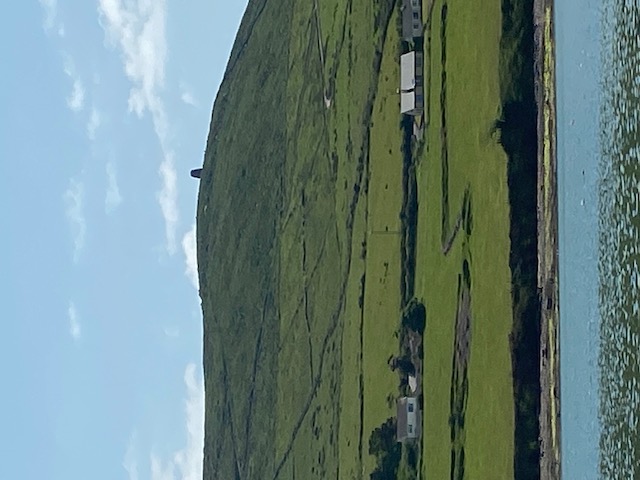
Irelands green landscape
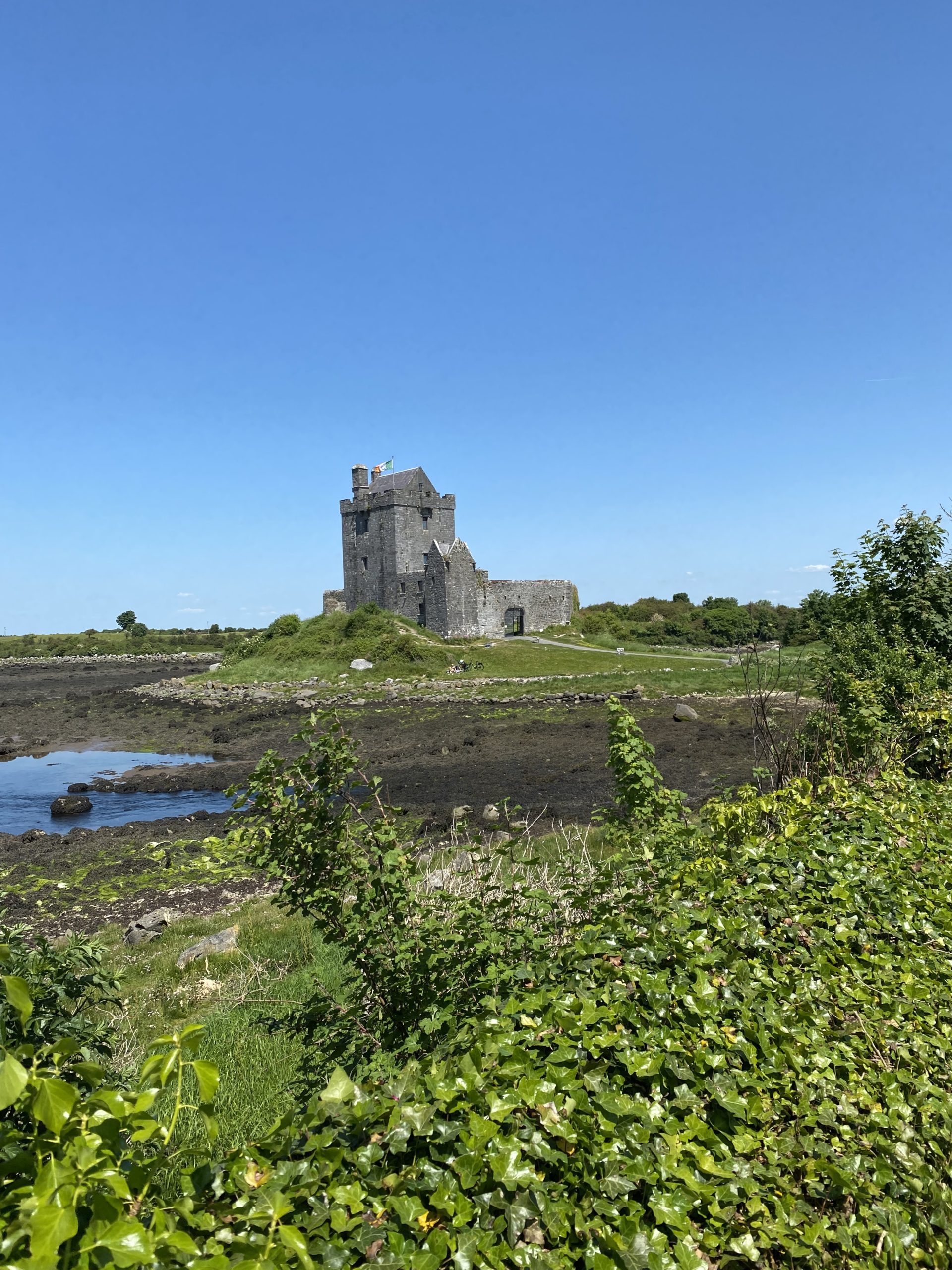
Boggy Area
As I mentioned, the museum display listed the dozens of scientific tests done on Mr. Meath’s body, but I did not see anywhere in the exhibit where the results were shown. I approached the Museum’s staff who said they did not have that information. However, they pointed me to the bookstore, where I found the book, “Dying for the Gods: Human Sacrifice in Iron Age and Roman Europe,” by Miranda Aldhouse Green, reprinted in 2014 (History Press The Mill, Briscombe Port, Stroud Gloucester, GL52QG.) The book was really helpful and I recommend it. It suggested that the majority of sacrifices were probably not high born or elevated citizens, but instead were more often criminals, slaves, captives, or difficult or troubled members of the community.
That information confirmed my intuitive sense of Mr. Meath as having been high strung or easily stressed, feeling restrictions, and yet wanting to be competitive and successful. If Mr. Meath possibly had mental or emotional issues, he could have been inconvenient for the community, and therefore convenient as a sacrifice. Of course, I can’t really know for sure. To see a proposed picture of Mr. Meath’s face, click the link below. This case has been fascinating to me and will probably be the farthest back in history I will ever go in order to apply forensic Palmistry.
https://en.wikipedia.org/wiki/Clonycavan_Man
Thanks for reading, and “that is what I did on my summer vacation.”
Joe Nicols
Post Script:
During the middle of the trip, I woke up in the hotel with these markings on my arm. These were like bruises, not bites (see picture.) This sort of thing has happened to me before.
*Thoughts?
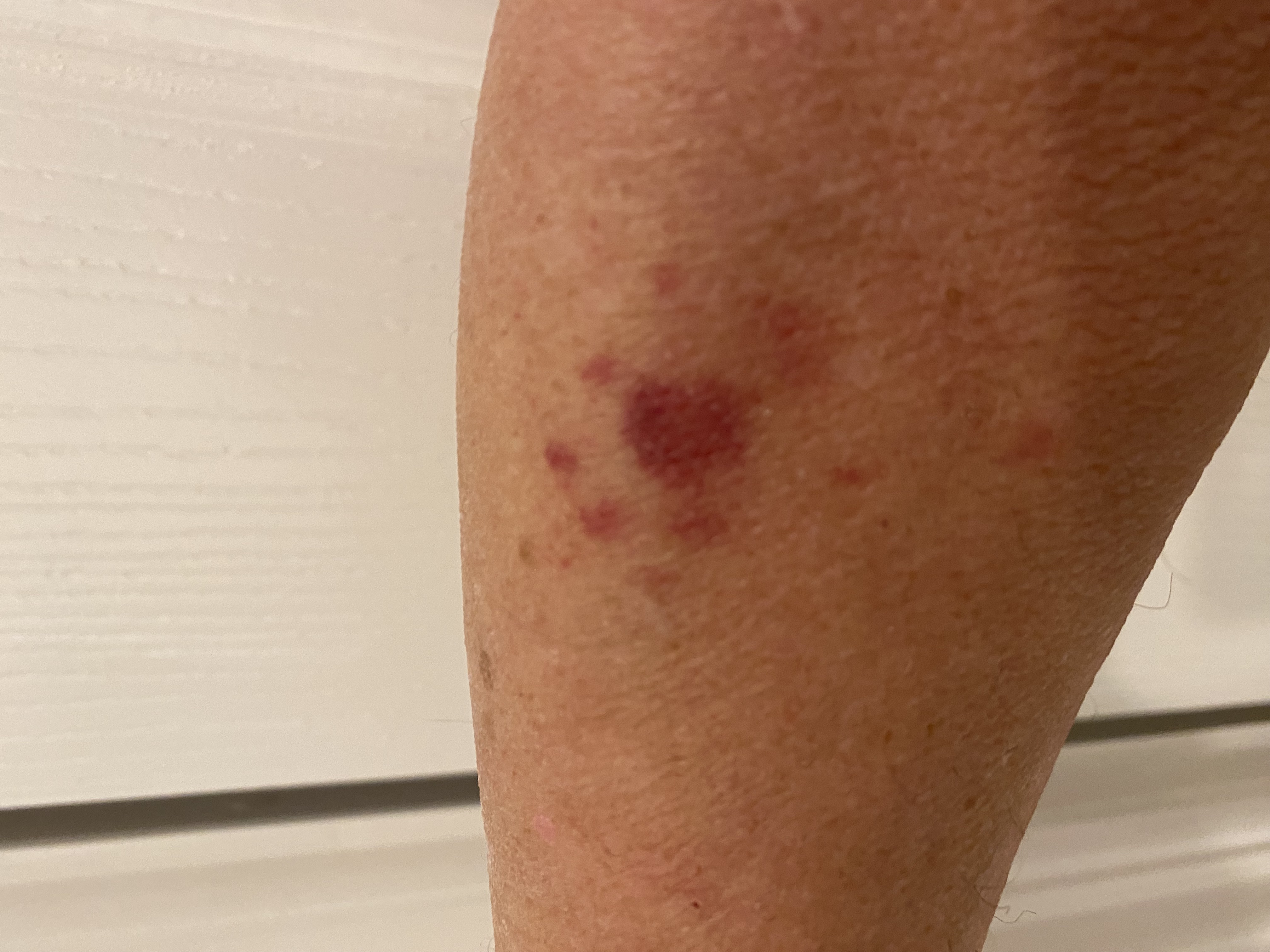
Markings on arm
